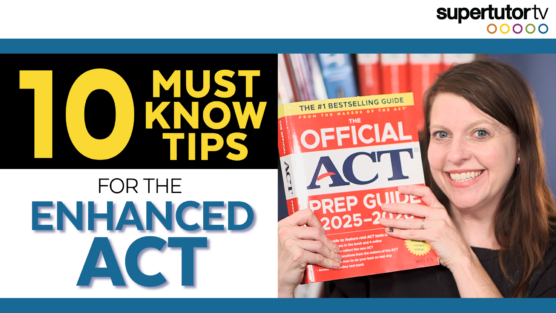Looking for tips, tricks, and strategies for the SAT® reading comprehension section? Having trouble with the SAT® reading test? Below I go over 5 essential tips to help you get through it effectively and efficiently.
1. Read with a purpose
You have to read actively — know what you’re looking for. It’s easier to answer questions correctly when you have a general idea of the essay. You don’t have to read slowly or too carefully; rather, you need to get a handle on some big elements of the essay. These are some things you need to look for on your first read:
- Plot – Figure out what’s going on in the passage. What is it about?
- Tone – Look at the word choice that the author uses. How does it sound? Does it sound exciting, interesting, or happy? Critical, skeptical? Use your senses to try and figure out what your passage is getting at. Get the vibe of the passage and let that guide you.
- Map of the passage – Know where stuff is so you can come back to it later. Do not try to memorize every detail. It’s more important to know what is where– memorizing details usually leads to time loss or errors.
These things help you get through the passage effectively– before tackling the questions. I highly recommend reading the passage first then moving on to the questions. The exception would be if you don’t understand the thing at all– then read a question or two to help you read with more purpose!
2. Don’t Cherry Pick
Cherry picking is this idea where you only look at some of an answer choice or you look at the individual concepts of the answer choice but not the whole idea of what it means. You have to take the entire answer for what it means on its own– don’t focus on a few words here or there– focus on its holistic meaning. Then, focus on the question stem and be sure the scale of your answer matches that of the question. A tiny detail may be true– but not the main idea. A fact may be true, but not encompass the intention of the author’s purpose. Make sure the answer answers the question.
3. Half Right is Not Right
A lot of time the test presents answer choices with two distinct elements– I’ll call these 50/50 answers– it could include two adjectives to describe a mood (sympathetic but self-absorbed), two attitudes of a character (annoyed at her ramblings, but polite in her manners), two general ideas, etc. Even if half of the answer choice is 100% right do not pick it unless you can find evidence for the other half. You’re better off picking an answer choice that you can find evidence to support both halves — even if each half feels only 60-70% right. Same with “which of the following provides the best evidence” questions. For these if the answer BEFORE this question has two halves, the best choice will address BOTH halves of the previous answer, not just one. It may not be worded perfectly or as easy to spot and grasp on to, but it’s the right choice.
4. Which Questions
Don’t always attempt “Which of the following is the best evidence for the previous question” questions out of order (aka FIRST). Often the first question in these pairs is the easier question. Students often get the earlier question right and the evidence question wrong. Oftentimes the test will also plant “trick” answers that dovetail with each other (i.e. two answers that go together for this pair of questions)– and out of context you may convince yourself of a wrong answer because a piece of evidence could be misconstrued to match that answer. Sometimes the answer choices aren’t even the best evidence for the question above it, so it’s easier to first figure out that initial question (i.e. there’s a stronger piece of evidence elsewhere), and then analyze which piece of evidence is strongest from what is available.
At the same time, on several tests I have seen question pairings so challenging that looking at both questions together, or using the line references in the “which of the following” question to be of some help. If you have no clue to the first question without looking to the passage, then it’s fine to consider the next question to help you. Just remember the evidence that is “best” in the 2nd question is often the best of what’s available, not the best overall. Always keep in mind the author’s main point of that evidence when you consider it.
5. Zoom out
Sometimes we get so wrapped up in the details– doing so can cause you to eliminate imperfect answers that are actually right. On this test in general, a lot of times the right answer is not perfect. Lets compare this to a dart board, with the red center being the perfect answer. On the SAT® the right answer is often one ring outside of that red center. Your goal is to find the closest to the center. One of the easiest ways to do that is to zoom out and look at the whole picture. Ask yourself, “What’s closest to the heart of this?” Don’t expect to find the perfect answer. Expect to find the one closest to the perfect answer.
If you liked this, check out our other awesome SAT® content and subscribe to our mailing list!
GOOD LUCK!




